From the P₃ Files: United and Continental Reservation Systems Integration – an example of Productivity Powered by P.E.O.P.L.E. ™
On March 3rd, two years to the day that United and Continental announced its merger to become the world’s largest airline, the “new United” integrated it’s reservation systems. The most important part of an acquisition or merger is the ability to integrate into a single entity. Having led cross functional teams through integrations, I can comfortably say, that United surely expended a great amount of time and effort to ensure a smooth transition. In most cases of integration, it occurs internal with little to no visible impact to customers or consumer awareness. This was not the case for United as the integration was very much in the public eye.
Our 16 hour journey from Washington Dulles to Phoenix began at 6:45 am with a greeting from a multitude of people standing in the ticket line. I quickly remembered the email I had received on March 1st titled “Important information about your flight this weekend”, which outlined tips to ensure a smooth travel experience. It was obvious that most of us in line had glanced over the email and assessed that it did not pertain to us. We arrived at the ticket counter in approximately 45 minutes which should have given us ample time to make it through security and catch our 8:30 flight. However, we reached the kiosk at the precise moment the system crashed. In addition to the crash, our ticketing required special assistance since our connecting flight was with a different airline. Following a 30 minute delay we rushed through security and arrived at our gate just in time. We sighed with relief, which was brief, because we then learned our flight was delayed for an hour. We were not worried as we would still arrive in Atlanta on time for our connecting flight. We entered the United Club and was confronted with the second challenge of our journey. United had sent an email informing us that our mileage plus numbers would be changing and to check on the new website for details. Needless to say we had not found time to do this, but it should not have been an issue since the mileage plus number is usually printed on the ticket. On this particular day, the tickets did not have the numbers printed on them. The Club staff patiently retrieved our numbers and our club membership from the new system.
As we comfortably waited for our flight, the departure time slipped to 9:45 which was a sure indicator that we were not going to make our connection. I worked with the agents in the Club to secure seats on the evening flight. It took time for the tickets to be issued but at least we had seats. Unfortunately the flight was at 5:09 pm and it was only 9:30 am. We settled in for a day at the airport. Our flight departed at approximately 5:45 pm to allow passengers with connections from other flights to board. We finally reached our destination shortly after 8 pm local time in Phoenix.
On Sunday morning over breakfast, my husband/business partner and I debated the success or failure of the system integration. As he pointed out the reasons why it was a “complete and utter failure” – i.e. no evidence that the system was tested with the necessary rigor to anticipate capacity overload, lack of a redundant system in place in the event of a system failure, the feasibility of a phased integration vs. a full-scale roll-out, and finally the disruption to travelers, I pointed out the success of the P.E.O.P.L.E. alignment with the overall strategic objective.
This blog is an observation of events that transpired throughout our journey. It is not an indictment on the success or failure of United’s system integration but the importance of P.E.O.P.L.E to organizational and strategic success.
Utilizing our Productivity Powered by P.E.O.P.L.E. framework – below is my observation of the integration.
P – Processes and Procedures were clearly understood by all staff. The coordination of the various queues was paramount in ensuring that each passenger was in the correct line. The staff did an excellent job of directing the traffic flow. Communication to customers on new procedures/processes was sent in a timely manner to ensure a smooth travel experience.
E – Efficiency of tools and systems. The system itself had glitches however; it was evident that the employees had been trained on the new system. To further support their ability to operate in a real-time environment United supported the ticket agents by having trainers available to assist in special circumstances.
O – Optimization of Resources –According to the staff I spoke with, United was operating at 75% capacity of its normal operations but had maintained a 100% staffing level to ensure enough staff was on hand to assist during the transition. United had anticipated and planned for flight delays. Partner agencies – such as TSA were prepared for the rush and ensured enough terminals were available for passengers to process through security as quickly as possible. I must say this was the first time we have ever made it through security at Dulles in 10 minutes or less. On more than one occasion throughout the day, we would hear an intercom announcement for “a member of the Success team” to report to a United gate. The reservation team, the baggage handling team and the flight crews were all working in tandem.
P – Product or Service affinity – is always a hard one to evaluate because it requires that employees understand the relevance of their task to the overall strategic objective. In the case of the system integration, the reservation agents appeared to have a clear understanding of their task on the overall impact to flight operations and customer relations. Everyone we encountered accepted the fact that they were the face of United and how they responded during this crisis period would be a direct reflection on how the “new United” would be perceived.
L – Collaborative leadership – management was present AND assisting during the transition. At one point when the system crashed – there was dialog between one of the reservation managers and the manager of baggage handling as to when they should cut off accepting passenger luggage, a critical discussion because depending on how he responded there was going to be a major up roar. He made the decision that they would accept bags up until 10 minutes before scheduled flight departures. Collaborative leadership was further displayed, when an IT manager arrived at the ticket counter – at this point he was the most important person in the airport as everyone wanted the system operational. There was a brief discussion with the reservations team – and within minutes after he returned to the front it appeared that at least 50% of the terminals were now functional.
E – Engagement is defined by the Conference Board (a non-profit, non-partisan business membership and research group) as “a heightened emotional connection that an employee feels for his or her organization, that influences him or her to exert greater discretionary effort to his or her work.” Throughout our journey the employees were highly engaged. Most impressive was that at no time did we encounter an unpleasant or frustrated United employee. Instead of apologies for the delays, we were thanked for our patience during the system integration, indicating that the employees had taken ownership of the activity.
Above are just a few of the examples we discussed over breakfast. If you are wondering how I know so much about the intimate details such as operating at 75% capacity , the 100% staffing levels or identifying the IT manager, it was because the P.E.O.P.L.E.were engaged and willing to talk about the overall objectives and spoke with enthusiasm. I am very interested in the next phase, which according to one of our flight attendants, will be training the staff to work on the legacy continental aircrafts. By the end of our breakfast debate, we agreed that the staff at United were the reason that a potential bad situation was made bearable.
Final thoughts, yes our journey to Phoenix took longer than a previous trip to Fiji, yes we missed a day at the resort but as a Human Capital Strategist I had the opportunity to watch productivity in motion AND my business partner was able to catch up on all episodes of the TV show “Castle”.
DB Latimore Professional Services Group , LLC sends a huge hummingbird salute (see our logo description on the home page) to the staff of United and its partner organizations at Dulles airport for an example of Productivity Powered by P.E.O.P.L.E. ™
Success or Failure – only United can say.


